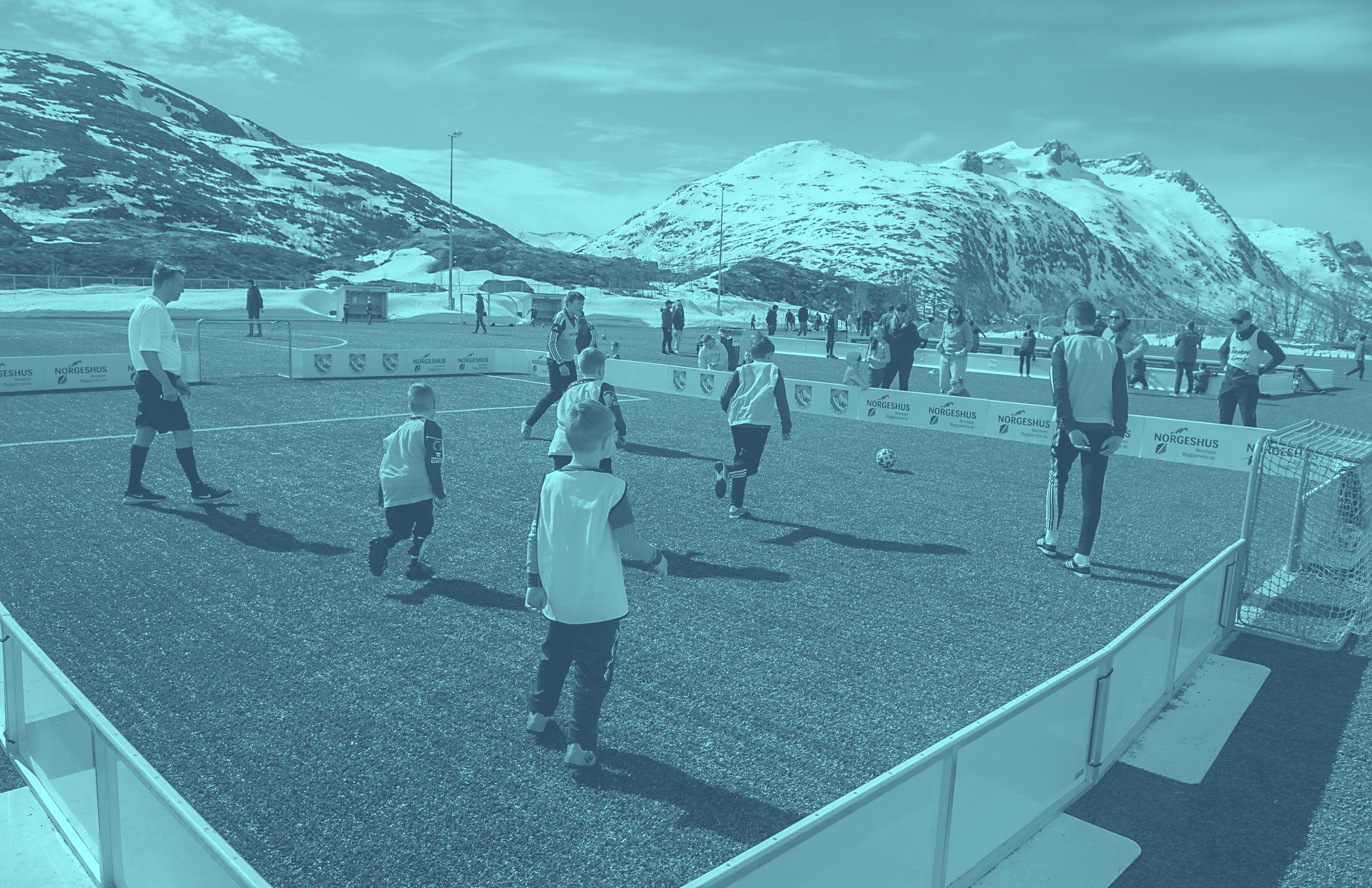Football facilities for all

Why is this a priority?
Football facilities across the country are the foundation of our activities. High-quality facilities are key to ensuring that as many people as possible can participate for as long as possible—and in the best possible way. For clubs to thrive, they need solid infrastructure and clubhouses, especially in rural areas with long distances and communities facing challenging living conditions.
Many football facilities in these areas struggle with quality and accessibility issues, directly impacting players' experiences and development. Norway's climate and geography have made artificial turf essential for increasing participation and improving activity quality.
With the ban on rubber infill coming into effect in 2031, we face one of the biggest challenges of our time. Viable alternatives that support year-round use in Norwegian conditions are not yet available, and developing new solutions will require significant investment.
Pitches must be built and refurbished using alternative infill. In exceptional cases, rubber granules may still be necessary to maintain a sufficient level of football activity. This strategy ensures flexibility for clubs while allowing for a gradual transition to environmentally friendly solutions.
We are in the midst of a facility crisis, both in terms of maintenance and access. As many as 400 of the country's 1,779 artificial pitches must be renewed within the next two years, and high-demand areas struggle with limited availability. Clubs and municipalities face significant challenges in upgrading pitches to meet future requirements. Environmentally friendly alternatives are more expensive and demanding, particularly in winter, putting both club finances and operations under pressure. The regional football associations must be equipped with the knowledge and resources to assist pitch owners in making smart choices regarding refurbishment, construction, and operations.
The transition, estimated to cost over NOK 7.3 billion, cannot be funded by football alone. The government must finance the environmental shift in collaboration with the football community and private sector to provide financial support for clubs and facility owners. Political advocacy must be strengthened at all levels, with clear divisions of responsibility between the federation and regional associations to ensure an effective and coordinated effort.
This requires us to review the composition of boards and decision-making bodies to ensure that political processes receive the optimal support.
Stronger cooperation with authorities is essential to addressing facility challenges and securing financial support for clubs and pitch owners. Clubs and municipalities face significant difficulties in upgrading artificial pitches to meet future standards.
We will strengthen networks with municipalities already in a transition phase so that their experiences can be shared and used as guidance for other facility owners. The regional football associations and the central facilities department will work closely together to provide facility owners with the best possible support in refurbishing, constructing, and managing pitches.
The Norwegian Football Federation (NFF) must ensure clear communication and support schemes that provide predictability for facility owners. A public environmental fund is essential. This transition requires collective effort and the best of our abilities. NFF must take a strong leadership role internationally, nationally, and locally.
Goals
1,800 high-quality facilities.
Les mer
Develop a national training facility.
Les mer
Secure NOK 2.46 billion for Football's Environmental Fund, which will cover: Urgent pitch rehabilitation, Transition to future-proof under-heating systems, Risk-free testing of new sustainable products for pitch owners.
Ensure that facility development and the transition away from rubber granules are included in the party programmes of Norway's major political parties.
Secure recognition of futsal as an independent sport in all local authorities, with access to training and competition time.
Key priorities
Develop a facility strategy by 2026, focusing on: Transitioning away from rubber granules, Access to football halls, A national training facility, Competitive top-level football venues.
Collaborate with government authorities to establish financial support schemes for clubs and pitch owners during the transition to alternative infill.
Strengthen advocacy efforts with key decision-makers, including sports councils, sports boards, and facility committees.
Systematise experience-sharing and best practices for year-round football facility operations.
Enhance knowledge and competence within regional football associations and clubs on: Pitch construction, rehabilitation, and management, Political engagement in facility development.
Participate in relevant knowledge networks and facility projects to gather insights and guide implementation, with regional football associations playing a key role.
Ensure a transition solution for top-level football that maintains sporting quality while moving away from rubber granules.
Assess clubhouse capacity needs and recommend measures to increase capacity while promoting sustainable clubhouse solutions.
Ensure better access to indoor facilities through collaboration with NIF, local authorities, and regional football associations, securing equal opportunities to play futsal regardless of place of residence.